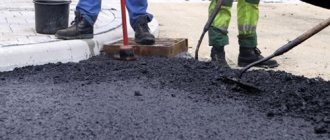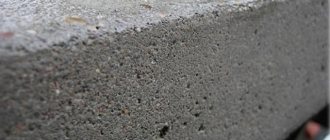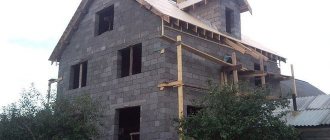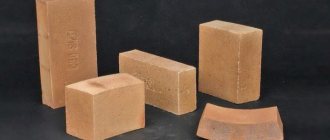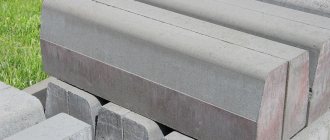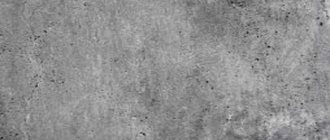At the end of the last century, most apartment buildings had flat roofs and bitumen was used for waterproofing. We can talk a lot about the quality of such coatings, but we will cite only one fact - the cost of apartments on the top floor was much lower than the rest. The reason is very simple: due to poor-quality roof covering, constant leaks occurred. Emergency or planned work ensured tightness for only a few years. This time was just enough to carry out the next renovation of the interior, then the roof leaked again and everything was repeated.
Currently, construction technologies have gone so far that modified bitumen waterproofing of surfaces has become one of the most reliable means among all existing materials. Liquid bitumen for roofing Liquid bitumen for roofing among high-quality roofing materials takes its rightful place in terms of performance characteristics and technical parameters. But these are not all its advantages; this material is easy to work with; there is no need to use special tools and equipment. Some types of liquid bitumen can be used on wet concrete surfaces, which is extremely important when it is necessary to carry out urgent emergency work.
What it is?
The material in question is an asphalt-like coating with rather unusual characteristics. It is used in a number of areas, but it will be especially indispensable in construction. Liquid bitumen is almost always used in laying roads, making roofing materials, and also for waterproofing various objects. It is used both in the construction of large industrial facilities and household ones.
There are two types of bitumen:
- natural;
- artificial.
The first is the product of natural oxidation of various petroleum substances. It practically never exists in its pure form. Most often you see certain asphalt components - limestone and dolomite, impregnated with bitumen-based resin compounds. They are crushed and, after turning into powder, used for asphalt. Well, or bitumen can be extracted from rocks.
The second type is the result of industrial type processing. This process requires a method of vacuum distillation of tar or its forced oxidation using air blowing. The first option is rarely used due to the fact that production is quite expensive, but the second is always used.
Similar raw materials are also used:
- for the foundation;
- asphalt;
- waterproofing;
- concrete;
- wood;
- connecting pipe sections.
Material evaluation
Natural or artificial bitumen is an organic binder that has a huge list of advantages that significantly outweigh its disadvantages. The popularization of its use in construction, road repair and roofing has established modern production, which produces various mixtures, mastics and bitumens at a high-tech level.
If you evaluate bitumen using a five-point system, you can give it a solid 4. This assessment is due only to difficulties during transportation, which requires special conditions. If we exclude the transportation factor, bitumen (as a building material) definitely deserves a 5 rating, which is confirmed by its use in construction for many centuries.
And in conclusion, we suggest watching a video about modern developments in the production of bitumen that improve its properties:
Technical characteristics and markings
Now let's say a little about the technical characteristics and labeling of this substance, which is most often sold in buckets, although sometimes found in cans. An increase in temperature for such a material causes it to soften and increase its plasticity, which makes it possible to use bitumen mixtures. If we talk about the main characteristics that are important for the use of bitumen, it is worth mentioning the following:
- penetration determines the viscosity or density of a material;
- ductility is an indicator of the plasticity of a bitumen-based composition;
- thermal stability determines the temperature at which softening of bitumen masses occurs and the substance transitions to a liquid state.
It should be said that the performance characteristics of this material are also determined by the brittleness temperature when the first crack appears in the bitumen layer.
If we talk about such a thing as labeling, then we should turn to GOST. According to it, bitumen compositions are divided into 3 categories depending on class and viscosity:
- SG 40/70, 70/130, 130/200;
- MG 40/70, 70/130, 130/200;
- MGO 40/70, 70/130, 130/200.
There is also road bitumen, which is marked with the abbreviation BND. Today, 5 types of such substances are used:
- 40/60;
- 60/90;
- 90/130;
- 130/200;
- 200/300.
The numbers indicate the degree of viscosity of the raw material. Naturally, the consumption per 1 m2 of different types of such composition will be different.
Also, the letter phrase designates 2 classes of marking according to GOST according to the pace of structure creation:
- slowly thickening;
- thickening at medium speed.
Now let's say a few words about each category.
Thickening at medium speed
This category of compositions, designated SG, is obtained by liquefying viscous bitumen for roads using petroleum products in liquid form. It is usually used for the construction of lightweight and permanent road surfaces, as well as for the formation of their bases in any climatic and road region of the country.
Slowly thickening
Denoted by the abbreviation MGO, it is obtained from slightly oxidized petroleum products or residual petroleum products or their compositions, which is necessary for the production of cold-type asphalt concrete and for the creation of lightweight road surfaces, as well as bases in road-climatic regions 2-5.
Test methods
5.1. Samples of liquid bitumen are taken according to GOST 2517. The weight of the combined sample of each brand of liquid bitumen is 1.0 kg.
5.2. The test for adhesion to marble or sand is carried out according to GOST 11508 for liquid bitumen of the MGO grades using method A, for grades SG and MG - using method B.
Liquid bitumens, to which cationic substances have been added, are tested for adhesion to sand; liquid bitumen with anionic substances - with marble.
5.3. Conditional viscosity is determined according to GOST 11503 with the following addition: the sample is pre-cooled to room temperature, kept for at least 1 hour, then heated 2-3°C above the test temperature.
(Introduced additionally, Amendment No. 3).
GOST standards and types of material
It is necessary to use mastic that has a certificate of compliance with the requirements of regulatory documents.
Technical conditions for roofing and waterproofing bitumen mastic are written in GOST 30693-2000. The document classifies building materials based on the following main characteristics:
- appointment;
- starting components;
- type of thinner;
- mode of application;
- nature of curing.
According to the standard, waterproofing mastic must withstand exposure to water for 10 minutes at a pressure of 0.03 MPa. Products must have transport markings in accordance with GOST 14192.
Waterproofing material is evaluated during testing according to the following indicators:
- softening temperature;
- viscosity;
- flexibility;
- adhesion strength to the base;
- water permeability;
- dry matter content.
Bitumen is a material of natural origin. To change and improve its characteristics, various substances are added during the manufacturing process of mastic.
With mineral fillers
Additives to the composition are: basalt wool, dolomite, chalk, asbestos, limestone and other minerals. Crushed substances occupy 20-25% of the total volume. Fillers give waterproofing strength. Compositions with mineral additives are recommended when processing buried foundations.
Bitumen-rubber
A ready-to-use multicomponent material, which contains bitumen, rubber crumbs, modifying additives, and mineral fillers. This mastic does not soften at elevated temperatures, and at negative temperatures it does not crack. Organic solvent provides liquid consistency.
Bitumen-polymer
The inclusion of polymer components increases the elasticity of the mastic. The dried layer can stretch and recover. It is characterized by excellent adhesion, long service life, and heat resistance. The material is used in roofing, floor processing, foundation waterproofing, tanks, and pipelines.
Acceptance rules
4.1. Liquid bitumen is taken in batches. A batch is considered to be any quantity of bitumen that is uniform in its quality indicators and accompanied by one quality document in accordance with GOST 1510 with the obligatory indication of the trademark. The quality document also indicates the mineral material (sand or marble) with which the adhesion test was carried out.
(Changed edition, Amendment No. 1).
4.2. The volume of samples is in accordance with GOST 2517.
4.3. If unsatisfactory test results are obtained for at least one of the indicators, repeat testing of a sample from a double sample is carried out.
The results of repeated tests are applied to the entire batch.
Where is it used?
If we talk about the use of bitumen composition, then depending on the goals that need to be achieved, the method of preparing and applying the composition will vary.
- In the case of roofing, pure bitumen without impurities is used - a technique that is hopelessly outdated, but still popular. Most often, they cover the roofs of old houses and garages by simply pouring them. This material is cheap, and the work here is extremely simple. For roofing, instructions for using bitumen are based on coating the roof surface with hot material. To make it flow better, heating or diesel fuel and motor oils are usually added to it. Correctly pouring bitumen for waterproofing is required after a thorough assessment of the condition of the surface. In most types of roof waterproofing coatings, bitumen will be an intermediate layer between the wall and the impermeable sheet. To give better adhesion to roofing felt, pure bitumen should be used. The use of a pure substance has disadvantages, including low durability and low coating strength. Over time, under the influence of natural factors, the bitumen cracks, and the coating needs to be redone. To avoid this, polymers are added to the composition. It is best to use bitumen for the roof in combination with roofing felt. With proper use of special mastics, such a coating will last a long time.
- Another area of application of the material in question is waterproofing for the foundation. Bitumen is often used to coat external foundation walls, and a rubber-bitumen type cloth - Izol or Brizol - is placed on top. If there is no significant groundwater pressure in the places where the foundation is located, and there are no earth movements, you can use the most common bitumen coating.
Despite the fact that the durability here is lower than that of bitumen mastics, the covered defects will be protected from exposure to water for a long time.
- Formation of protective coatings on communication lines. Complex-type bitumen-based coatings are a universal solution for protecting pipes and other structures made of metal buried in the ground. The main waterproofing agent in this case will be various modifications of bitumen-based sheets. They are attached to mastic or bitumen, which are applied to a metal surface previously coated with a primer. Before applying the main layer that binds all the elements, it is necessary to coat the product with a primer. This is the name for diluted low-viscosity bitumen, which improves adhesion by filling the pores.
- Creation of asphalt-type coatings. This requires the use of the highest quality bitumen compounds, which have maximum temperature and strength performance indicators. The disadvantage of bitumen will be the loss of its strength characteristics at high pressure. It is for this reason that truck driving is prohibited on various types of routes, especially in the summer. To improve the quality of the composition for forming asphalt, plasticizers are used that have a whole range of positive characteristics.
- Bitumen in its pure form is not suitable for processing wood , so a number of special compositions based on it have been developed, in particular, bitumen mastic. Most often it is used as waterproofing. In some cases, mastic can act as a fastening layer when installing a wooden covering.
At low temperatures, bitumen becomes brittle, and at high temperatures it melts. The selection of one type of material or another will be determined by the loads and natural conditions of use. When laying highways where heavy vehicles travel, appropriate bitumen is used. In addition, an asphalt mixture cannot do without gravel and sand.
The proportions of these substances depend on the coating requirements. The more sand and less gravel, the smoother the surface will be.
The main features of applying bitumen to surfaces
Before using liquid bitumen, you need to be sure that the specific application technology is suitable for the specific situation. First of all, you need to understand that this material is very finicky, and any mistakes can have serious consequences.
At the very beginning, the bitumen mixture is heated. Often, special installations are used for this purpose, designed for melting individual construction resources. You can also melt bitumen in an ordinary metal barrel, under which a fire is lit. It is worth noting that during heating the bitumen will begin to foam strongly, but this should not be confusing - this is a normal process. To make sure that the bitumen is ready for use, just look at the surface of the mixture. If we see a smooth and shiny layer of bitumen there, the material can already be used in construction. It is worth understanding that overheating of bitumen is also a very serious problem. If the material gets too hot, it is simply not recommended for use in construction. For example, if the bitumen intended for covering the roof is significantly overheated, after some time it will begin to crack, and then you will have to purchase bitumen again.
To improve the characteristics of bitumen, various solvents are often used. It must be said in advance that modifying the composition of bitumen is a rather risky process that can bring a lot of trouble. Despite this, it is worth knowing that diesel fuel is often added to the bitumen. For mixing, you need 2 times less solvent than bitumen. The bitumen should be heated separately from the solvent, and only then mixed. As for the positive results from such experiments, the updated composition of bitumen will become less sensitive to temperature changes. And this is a very important aspect, especially when using liquid bitumen as waterproofing.
As for directly applying bitumen to the surface, there are also some difficulties. First of all, you need to know that bitumen hardens incredibly quickly, so immediately after heating it must be applied to the surface. In this case, we have no more than three minutes. If the surface area to which bitumen is applied is large enough, you can level the material with a mop. In other cases, brushes and rollers are actively used.
If we talk about the volumes of bitumen used, they are as follows:
- to create waterproofing, up to 2 kg of bitumen per 1 m2 is used;
- when constructing a roadway, at least 2-3 kg of bitumen per 1 m2 is required;
- To impregnate asphalt you will need about 1 kg of material per 1 m2.
Application options
Before application, no special surface preparation is required; it is enough to clean the desired area from all existing contaminants. But the material has several methods of application.
Spray application
This method can be called the most desirable , since it has many advantages over other methods:
- it is easy to apply the composition to junctions, bends, and geometric shapes of the roof;
- significantly saves material and reduces application time.
For spraying, a special spraying device (gasoline engine) is used, which helps to quickly process a large area of the roofing surface. And all thanks to mobility and relatively low weight (no more than seventy kilograms). In industrial construction, this method can be considered the main one, since it saves the amount of consumed composition; it is possible to process a significant amount of roof space at high speed: up to two thousand square meters per day.
Dyeing method
In private construction, it is not always possible to use special equipment. But the painting method involves the use of brushes and rollers available to everyone, which are very easy to work with.
Compared with the spraying method, a roof made of rubber applied with a roller is thicker. Of course, this significantly increases material consumption by up to three times. But a thicker and more resistant coating will last a longer period without complaints and frequent repairs.
This application method is very popular among craftsmen who are accustomed to doing all repair work themselves, without resorting to the services of professionals. Typically, private houses have small roofs, so treating the entire surface yourself in a day is not particularly difficult.
Rubber is applied manually in several layers, each layer having an average thickness of four millimeters. Wait fifteen minutes between applying layers - this time is enough for the previous layer to dry. It is necessary to ensure that the coating is even; for this, a regular spatula is usually used.
Bulk method
This method is similar to the previous one, but the installation process can be done much faster. Liquid rubber is poured into the center of the roof and quickly began to be leveled with spatulas or rollers.
But here it’s more difficult to control the thickness of the layer. And the installation work will have to be done at a pace, because the solution dries quite quickly. And without proper skill it is very difficult to carry out such work.
Laying technology
It is necessary to strictly follow the sequence of actions so that the result is an ideal coating using this interesting solution:
- First, calculate the area of the roof being treated. Then, based on the data obtained, the required amount of waterproofing agent for the surface is calculated. Typically, one kilogram of cold composition is enough to treat four square meters, taking into account a two-layer application. But to the result obtained, 10% of the material is usually added for unforeseen cases.
- You need to buy liquid bitumen for roofing at specialized points. The material must have all the necessary documents. In this case, sellers will provide advice before purchasing the material.
- Before application, the roof is cleaned of debris and dust. The roof needs to be completely dried, although it is not prohibited to apply this type of material to wet surfaces. There is no need to remove the old roofing covering, since liquid bitumen adheres well to wood, metal, concrete, brick or tile. Such versatility can also be safely attributed to the advantages of the material.
- Next, the composition is applied to the surface using the chosen method, which are described above - it all depends on the availability of the necessary equipment and certain skills.
- The coating is checked for leaks and after that the finishing work begins. Liquid roofing can be painted with water-based paint, making the new roof more attractive.
Modern roofing material combines high quality and undeniable advantages in operation. The unpretentiousness of the material and ease of installation make it a very attractive coating for decorating roofs of any type. So it is not surprising that both professional craftsmen and beginners in construction are increasingly giving their preference to liquid rubber for roofing.
Liquid compositions in construction
Asphalt bitumen usually has a very high viscosity. However, sometimes liquid varieties of this material are also used when pouring coatings. They are used mainly to extend the road work season. Liquid bitumen is added in certain proportions to the viscous bitumen. As a result, the coating does not harden too quickly at low temperatures. Liquid bitumen is made from viscous bitumen by adding distillate fractions.
When performing repair work, medium-viscosity material is also used. It is used to process an already cleared card. The rate of bitumen consumption when laying asphalt in this case is not too high and is only 0.5 l/m2.
How to get rid of bitumen - everyday advice
Since the material does not dissolve in water, sticks to any surface, has high hardness and the ability to get dirty, you need to work with it extremely carefully. It should be remembered that simply washing bitumen from clothes with washing powders will not work.
If you are still unlucky enough to avoid bitumen stains in unwanted places, you can get rid of them as follows:
- treat with white spirit - suitable for removing bitumen from the surface of a machine or tool. The advantage of white spirit is its slow evaporation. The bitumen has time to dissolve and can then be easily removed with a soft cloth. Before removing, check the effect of the solvent on the paint on invisible parts of the body. Tip: Do not use solvents containing acetone or ethyl acetate;
- diesel fuel - suitable for cleaning rubber products such as car wheels. Diesel fractions are not so aggressive towards synthetic rubber and do not cause its swelling. In the case of very dirty wheels, it is better not to do anything at all - after 300-400 km the stuck particles will bounce off without outside intervention;
- light solvents (gasoline galoshes or benzene) - suitable for cleaning bitumen stains from fabrics and clothes. Keep in mind that benzene is quite toxic and while it will help remove bitumen, it will also easily dissolve many paints.
To remove bitumen from a building surface (concrete, brick), you can use any hydrocarbon solvent - gasoline, diesel fuel, kerosene or white spirit. You can wash off the remaining oily diesel fuel with a rag moistened with a small amount of gasoline.
Removing bitumen using CYTOSOL BIO solvent, which will help you easily clean any surface, including the car body
Bitumen and asphalt pavements
In most cases, bitumen is used to create asphalt pavements. Obviously, in this case there is a need to use exclusively high-quality bitumen, which will retain its original properties for decades. However, we should not forget that insufficient strength and low durability are the main disadvantages of liquid bitumen.
Thus, in a number of cases it is necessary to carefully monitor the condition of roads created using bitumen. In the summer, this material actively melts, and if large vehicles move along the roads, the bitumen is gradually erased. It is for this reason that the movement of trucks during the daytime is prohibited on some highways. However, there are also some restrictions in winter. They are often associated with the fragility of bitumen at low temperatures.
To improve the situation a little, various plasticizers are often added to asphalt. In addition, hard bitumen is used, which interacts better with the asphalt surface.
Liquid bitumen is practically irreplaceable when repairing road surfaces. Most often we are talking about minor repairs with patches, during which considerable volumes of liquid bitumen are needed. Considering that this material is used on the top layer of the road surface, there are special requirements for it.
The role and use of bitumen in the road construction industry
Bitumen and products based on it are one of the key components of the modern road construction industry. Work to improve the quality of asphalt road surfaces is largely based on the development and implementation of new types of high-quality road bitumen and polymer bitumen materials. Improving the properties of bitumen (organic binder) is one of the main methods for improving the quality of asphalt concrete mixtures used for paving roads. In most cases, improving the properties of bitumen binder means increasing its adhesive properties and increasing resistance to temperature fluctuations.
Petroleum road bitumens (BND)
Petroleum road bitumens are divided into viscous and liquid. Viscous bitumen is used in the production of hot asphalt concrete mixtures for paving and other road work in the warm season. Liquid bitumen is used in the production of cold asphalt concrete mixtures and, unlike viscous bitumen, contains solvents that evaporate in the open air, transforming the bitumen mass into a solid state. Thus, liquid bitumen is designed to extend the road construction season. Liquid bitumen is produced by mixing viscous bitumen with distillate fractions-diluents (solvents).
The main function of road bitumen in the production of asphalt concrete is to bind together particles of mineral material, weaken the resulting temperature and deformation stresses and uniformly wet and envelop particles of mineral material. The quality and durability of the asphalt pavement depends on the quality of the bitumen used in the preparation of the asphalt concrete mixture. In addition to the production of asphalt mixtures, petroleum road bitumen is used in the production of bitumen emulsions used for priming and surface treatment of structural layers of road pavement.
Polymer-bitumen composites (PBC)
The rapid growth in the number of heavy vehicles on the roads and, as a consequence, an increase in axial loads on the road surface, contributes to the development of deformations of asphalt concrete roads created on the basis of conventional bitumen. The quality of bitumen, being a key factor in the production of various types of asphalt concrete mixtures, ultimately determines the quality of the asphalt road surface and its service life.
The most important condition for obtaining a high-quality asphalt concrete mixture is good adhesion of bitumen to mineral materials, which is ensured, first of all, by good enveloping and chemical interaction of the active components of bitumen with the mineral filler. In recent years, for various reasons, the quality of road bitumen has noticeably deteriorated, but on the other hand, various modifying additives for bitumen and polymer-bitumen binders (PBB) have begun to be developed and actively used, which can improve the characteristics of asphalt concrete pavements.
Bitumen modification is the process of introducing third-party substances, during which the final physical and mechanical properties of bitumen change. The most commonly used as bitumen modifiers include the following types of high-molecular compounds:
- Block copolymers of divinyl and styrene (SBS, DST)
- Thermoplastics (polyethylene, polystyrene, epoxy resin, ethylene vinyl acetate)
- Elastomers (synthetic rubbers).
- Thermoset plastics (urea, polyester, synthetic).
Polymer-bitumen binder (PBB) is a modern composite material obtained by mixing and homogenizing viscous road bitumen with block copolymers of the SBS type (styrene-butadiene-styrene); plasticizers and surfactants. Polymer-bitumen binder is a new road construction material that is superior in many characteristics to conventional petroleum road bitumen. As the name suggests, polymer-bitumen binder performs the binding function in the production of asphalt mixtures for paving, repair, reconstruction and road construction. PBB, in comparison with conventional road bitumens, increases the service life of the pavement by 2–3 times, increasing the resistance of the road surface to deformation under high loads, reducing the likelihood of rutting, and also allowing road construction work to be carried out at a temperature of −10 °C. Polymer bitumens are characterized by a wide range of operating temperatures (the difference between the softening temperature and the brittle temperature) - up to 100 ° C (while for conventional bitumen - up to 60 ° C).
In Ukraine, during the construction of public main roads, the State Highway Service has established requirements that regulate the construction of the upper layers of the road surface only from asphalt concrete mixtures based on polymer bitumen.
Another way to improve the performance characteristics of an asphalt road surface is to add various adhesive additives to bitumen or polymer-bitumen binder. Adhesive additives improve the adhesion of road bitumen and polymer-bitumen binders with mineral filler, slow down the aging process of bitumen at high temperatures, increase water resistance and corrosion resistance, frost and heat resistance of the road surface, and can extend the road construction season.
Calculation of mastic consumption
Material consumption depends on several factors:
- type of mastic;
- air temperature;
- method of application;
- percentage of volatile substances in the composition.
When applying the cold method, it is necessary to take into account the remaining dry mass. The higher the indicator, the lower the consumption of the composition. Hot bitumen does not shrink, so the layer thickness does not change. The recommended foundation coating thickness is 2 mm, which corresponds to two layers of waterproofing. The second layer is applied only after the first has dried. The average consumption of the composition is 2 kg/kW. m. Typically, manufacturers indicate exact data on the packaging, so by calculating the surface area of the foundation, you can determine the total volume of coating waterproofing.
Basic properties of BND
In addition to viscosity, bitumen for asphalt is characterized by the following properties:
Ductility. This indicator is determined by the distance over which bitumen can be pulled into a thread without breaking it. The larger it is, the higher the adhesion of the mixture. Road bitumens usually have a degree of ductility greater than 40 cm. The requirements for this indicator for BND are established at a temperature of 0 degrees C.
Deformative characteristics. When determining the suitability of bitumen for the production of asphalt, attention is also paid to its properties such as elasticity, creep, ductility, fragility, etc. They determine the deformation characteristics of this material. When bitumen is heated, the latter should not change too much.
Service life of bitumen coatings
It has been mentioned many times in this material that bitumen has a number of weak points, which, unfortunately, do not make bitumen a practical modern construction resource.
However, if you follow all the intricacies of the technology for applying bitumen to the surface, you can obtain a fairly durable waterproofing layer.
If we are talking about creating a protective layer for a roof, then often the service life in this case does not exceed 5 years. If bitumen is used to improve the characteristics of the foundation, then the material will serve for decades without any problems.
In other cases, it is necessary to update the bitumen layer every few years, as the material rapidly loses its effectiveness.
Applying bitumen to the roof
Often, owners use bitumen to improve the performance of the roof. Many people believe that this material has already become obsolete, but in reality everything is a little different. Liquid bitumen is actively used in cases where many analogs are too expensive for owners. And in terms of efficiency, this construction resource is often not inferior to modern analogues.
Considering that liquid bitumen is an inexpensive option for equipping a roof, you don’t have to worry about damaging it, and if necessary, you can easily re-apply the material to the surface.
Most often, a little trick is used to apply bitumen to the roof. It consists of adding fuel (motor, diesel) to the material. Petroleum solvents can also be used. According to many experts, such solutions significantly improve the quality of the roof waterproofing created. It should be understood that bitumen is often not the main waterproofing layer. Most often, the above material serves only as an intermediary between the ceiling and the impermeable roofing material. In the event that the roof is damaged, a layer of bitumen can easily reduce the harmful effects of moisture or even a large volume of water. In any case, you shouldn’t rely too much on the positive properties of liquid bitumen.
In some situations, owners do not risk adding any modifiers to the bitumen. And this is where the big mistake lies. The bottom line is that in its natural state, bitumen has a number of problematic aspects. The most serious problem may be the low strength of the created waterproofing layer. For example, after a heavy rainfall, bitumen can be severely damaged. It often happens that under the influence of high temperatures, the bitumen layer begins to rapidly crack. Obviously, such waterproofing cannot be used in the future.
Accordingly, it makes sense to use various additives that increase not only the strength, but also the durability of liquid bitumen. The choice of certain additions to the composition of bitumen depends only on the specific conditions in which the home is located.
Most often, liquid bitumen and roofing felt are used to create a roof. In parallel, you can use various mastics that successfully resist the influence of high temperatures and precipitation.
If all technological details are observed, such a roof can last up to 10 years without repair.
The most important thing in this process is to properly apply bitumen to the desired areas of the surface. If bitumen is not applied at the junction between the roofing strips, problems cannot be avoided. At the very beginning, perhaps nothing bad will happen, but a little later moisture will penetrate into the room, and then the waterproofing material will begin to deform and crack.
If errors in creating a roof are discovered immediately after the main process, they must be corrected immediately. Most likely there won't be any problems in the future.
Standards for bitumen
Bitumen is a petroleum product from which construction and roofing waterproofing is made. Construction bitumen must comply with GOST 6617-76 of 2002. In accordance with GOST, construction bitumen is used for waterproofing the underground part of a house or foundations, for repairing roofing and filling leaks in buildings. Modern waterproofing coating or lining materials based on construction bitumen have polymer additives. For example, Technonikol bitumen mastic, which received many positive reviews from users.
According to GOST, roofing and construction bitumen is produced in several types:
Roofing:
- As an initial coating of bitumen and for impregnation of BNK 45-190
- For impregnation of BNK 40-180
- For covering roll-type waterproofing BNK 90-30.
Construction bitumen:
- BN 50-50
- BBN 70-30
- BN 90-30
In accordance with GOST, construction and roofing bitumen has the following technical characteristics:
- Combustion temperature - 220-300 0С,
- Self-ignition 386 0C (Flammable substance according to GOST 12.1.044).
- Hazard class 4 according to GOST 12.1. 007. (Non-toxic, does not emit toxic fumes, but if it gets on the skin or mucous membranes it can cause a thermal burn).
In order to protect yourself when coating with bitumen, you need to wear special protective clothing, and during internal work, provide exhaust hood and good ventilation.
For coating waterproofing, materials based on construction bitumen are used:
- Liquid bitumen BN3, BP5, DN-1V;
- Solid BN-3,4,5.
- Bitumen polymer mastic.
- Bitumen-rubber waterproofing.
Bitumen-based sealants
Today, bitumen sealing compounds are actively used in various works related to waterproofing. First of all, such products allow you to get rid of leaks. They are also used during the installation of skylights, sealing elements of the drainage system, sealing seams between the chimney pipe and the roofing, as well as sealing cracks in concrete coatings and other mineral surfaces. Asphalt sealants do not need to be heated before application. A mounting gun is used to apply the material. After all the solvents that make up the sealant evaporate, its consistency becomes rubbery.
